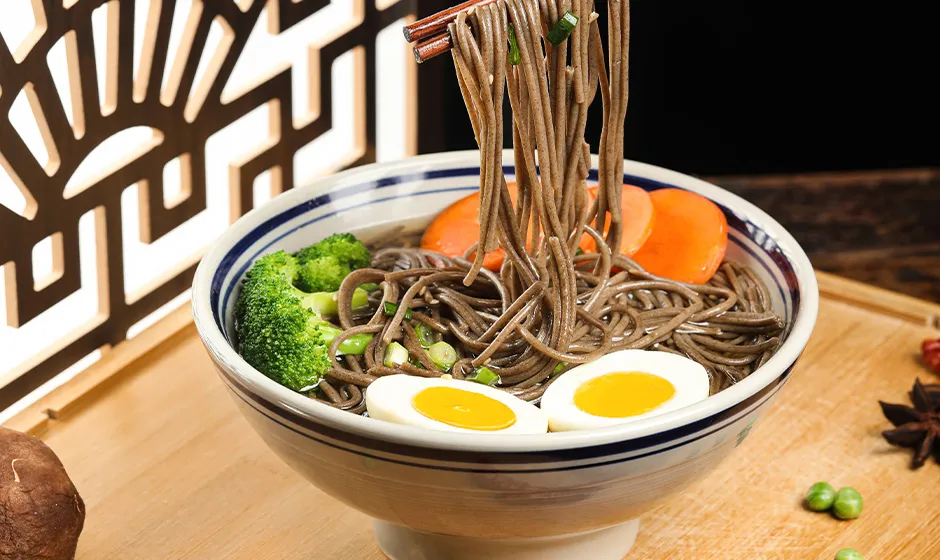what type of noodles can diabetics eat
What Type of Noodles Can Diabetics Eat?
For many people with diabetes, managing blood sugar levels is a vital part of daily life. One significant aspect of this management is diet, which means paying close attention to the types of carbohydrates consumed, including noodles. With a variety of noodle options available, it’s essential for diabetics to choose wisely to maintain stable blood sugar levels and enjoy satisfying meals. This article explores the various types of noodles that can be incorporated into a diabetes-friendly diet.
Understanding Carbohydrates and Glycemic Index
Carbohydrates are a primary energy source for our bodies; however, they can significantly impact blood sugar levels. The Glycemic Index (GI) is a measure that ranks carbohydrates based on their effect on blood glucose. Foods with a high GI can cause rapid spikes in blood sugar, while those with a low GI lead to more gradual increases. For diabetics, it’s generally advisable to consume foods with a low to moderate GI.
Whole Grain Noodles
One of the best options for diabetics is whole grain noodles. Made from whole wheat, these noodles are higher in fiber compared to their refined counterparts. Fiber is beneficial as it slows digestion and helps regulate blood sugar levels. Whole grain noodles have a lower GI than white pasta, making them a more suitable choice for those monitoring their carbohydrate intake. They can be used in various dishes, from stir-fries to salads, providing both taste and nutrition.
Legume-Based Noodles
Another excellent alternative is legume-based noodles, which are made from ingredients like chickpeas, lentils, or black beans. These noodles are rich in protein and fiber, contributing to lower blood sugar levels after meals. The high fiber content aids in digestion and promotes a feeling of fullness, which can help manage overall calorie intake. Legume-based noodles often have a significantly lower glycemic index, making them a favorable choice for diabetics.
Shirataki Noodles
Shirataki noodles are made from the konjac plant and are exceptionally low in carbohydrates and calories, making them a popular choice for those with diabetes. These noodles are primarily water and glucomannan, a type of soluble fiber. They have a negligible effect on blood sugar levels, making them excellent for those looking to control their carbohydrate intake. Shirataki noodles can be used in various dishes, including soups, stir-fries, and cold salads.
what type of noodles can diabetics eat

Vegetable Noodles
Vegetable noodles, also known as zoodles (zucchini noodles) or other spiralized vegetables, are another fantastic option for diabetics. By substituting traditional wheat noodles with vegetables, you can significantly reduce carbohydrate consumption while increasing vegetable intake. This not only helps in blood sugar management but also adds essential vitamins and minerals to your diet. Vegetable noodles can be easily incorporated into various dishes and offer a unique flavor and texture.
Soba Noodles
Soba noodles, made from buckwheat, are another option that can fit well in a diabetic diet. While they do contain carbohydrates, they have a lower GI compared to traditional pasta. Additionally, soba noodles provide a good amount of protein and fiber, which can help stabilize blood sugar levels. They are versatile and can be served hot or cold, making them a suitable ingredient for a variety of dishes.
Cauliflower Rice
While not a noodle per se, cauliflower rice is a popular substitute for traditional rice and can be used in a multitude of noodle dishes. This low-carb alternative can help reduce overall carbohydrate intake and increase vegetable consumption. It can be sautéed, steamed, or used in stir-fries, adding texture and volume to meals.
Sweet Potato Noodles
Sweet potato noodles, also known as “sweet potato glass noodles,” offer another nutritious option. While these noodles do contain carbohydrates, they are low-GI and high in fiber, making them a suitable choice in moderation. They have a slightly sweet flavor and can be a delightful addition to stir-fried dishes or salads.
Conclusion
For diabetics, choosing the right type of noodles is crucial for maintaining stable blood sugar levels while enjoying flavorful meals. Whole grain, legume-based, shirataki, vegetable noodles, soba, cauliflower rice, and sweet potato noodles are all excellent options that can be included in a balanced diet. It's important to monitor portion sizes and pair these noodles with plenty of vegetables and proteins to create a wholesome meal. As always, individuals should consult their healthcare providers or dietitians to tailor dietary choices that suit their specific health needs. With mindful choices, enjoying a variety of delicious noodle dishes can remain an integral part of a diabetic diet.
-
Unleash Your Inner Chef with Delectable Italian Pasta CreationsNewsAug.01,2025
-
Savor Health and Flavor: Irresistible Soba Noodles for Sale Await!NewsAug.01,2025
-
Nourish Your Body with Premium Organic Ramen - A Culinary Delight AwaitsNewsAug.01,2025
-
Elevate Your Dishes with Our Exquisite Kinds of Egg NoodlesNewsAug.01,2025
-
Dive into Flavorful Convenience with Our Ramen OfferingsNewsAug.01,2025
-
Discover Exquisite Types of Naengmyeon and Chilled Soba NoodlesNewsAug.01,2025
-
Is Whole Wheat Pasta Healthy?NewsMay.30,2025
Browse qua the following product new the we

















































































































